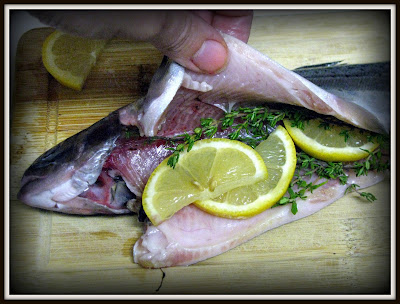The 7th Day of Christmas happens to be a double whammy. While this recipe for cream swans fulfills the requirements for seven swans a-swimming, it also comes from my new favorite book series
Game of Thrones. Awesome.
A while ago, I broke down and bought
A Feast of Ice & Fire: The Official Companion Cookbook. It was kindof an early Christmas present. To myself. Several weeks before Christmas. But this book? It's beautiful. And it has gorgeous pictures of all those things in
Game of Thrones that make you drool (well, minus Tyrion and Jamie Lannister). There are Medieval and Modern recipes, and it just so happened that they included a recipe for cream swans, which appear ever-so-briefly in
A Clash of Kings.
"For the sweet, Lord Caswell's servants brought down trays of pastries from his castle kitchens, cream swans and spun-sugar unicorns, lemon cakes in the shape of roses, spiced honey biscuits and blackberry tarts, apple crisps and wheels of buttery cheese."
Seriously. I love
Game of Thrones. Possibly because there's so much food in it. So. Much. Food.
And these swans? Delightful. They take a bit of work and sometimes a bit more luck, but they are beautiful and delicious. I would definitely love to serve these at a party.
They involve making meringue, which in theory isn't hard. I've successfully managed more than a few times. But for some reason, I had to attempt it three times, and waste more eggs than I care to admit, before I actually succeeded this time around. That's the problem with meringue. It's wonderful, but high-maintenance. If your bowl and beaters aren't immaculately clean, the egg whites won't stiffen. If you add the sugar too soon, the egg white might not stiffen. If you look at it cross-eyed, the egg whites... okay, maybe not that last one. But it felt like it the other day.
But, eventually, I triumphed. Without throwing a temper tantrum, even. I only stomped my foot once. Maybe twice. And cream swans were had. And devoured.
On the seventh day of Christmas, my true love gave to me seven swans a-swimming...
Cream Swans
(makes 6-8 swans)
adapted slightly from
A Feast of Ice & Fire, by Chelsea Monroe-Cassel and Sariann Lehrer
6 egg whites, room temperature
1/2 tsp cream of tartar
1 1/2 c. superfine sugar
Slivered almonds
Vanilla ice cream, frozen yogurt, or sorbet, to serve
Preheat oven to 225F.
Using a very clean mixer (with equally clean beaters), beat the egg whites until foamy.
 |
| Not foamy. |
 |
| Foamy. |
Add in the cream of tartar and beat on medium high until soft peaks form. The eggs will begin to expand throughout this period. Keep going until there are soft peaks. This is best tested using a spoon. Dip the spoon into the egg whites and pull it out. If the whites form a soft peak, you're there.
While continuing to beat on medium high, add the sugar in slowly, a few tablespoons at a time. Don't rush. The whites will begin to thicken and turn a lovely white. You want to keep beating until stiff peaks form. Use the spoon technique again. If you dip the spoon in and the peak stands up on its own instead of folding over on itself, you've got stiff peaks. Don't worry too much about over-mixing. Once you've add the sugar, it's almost impossible to over-beat the whites.
Load the stiff whites into a pastry bag fitted with a round tip.
The book contains a template for the wings, neck, and base, but it wouldn't be very hard to freehand it. The base will need to be large enough for a scoop of icing, in a teardrop shape. The wings are a comparable size.
Pipe the base, wings, and neck onto sheets of parchment paper. Use a slivered almond to make the beak.
Place parchment paper onto baking sheets and bake in preheated oven for 1 hour and 20 minutes. The book recommends checking on the smaller pieces halfway through. I did so and found that the meringue wasn't done yet. I baked for the entire 1 hour 20 minutes and didn't have any pieces that were over-baked.
Turn the oven off and leave the meringue in the oven overnight so that it can dry out. The following day, you should be able to easily pick the meringue pieces off of the parchment paper.
To assemble, lay out the base on a dish. Place a small scoop of ice cream on the base.
Attach the remaining pieces: a wing on each side, the neck in the front. Repeat to assemble the other swans. Serve immediately. With or without a spoon speared in the ice cream in true
Game of Thrones fashion.
...six geese a-laying...
...four colly birds...
...three French hens...
...two turtledoves...
...and a partridge in a pear tree.
















































